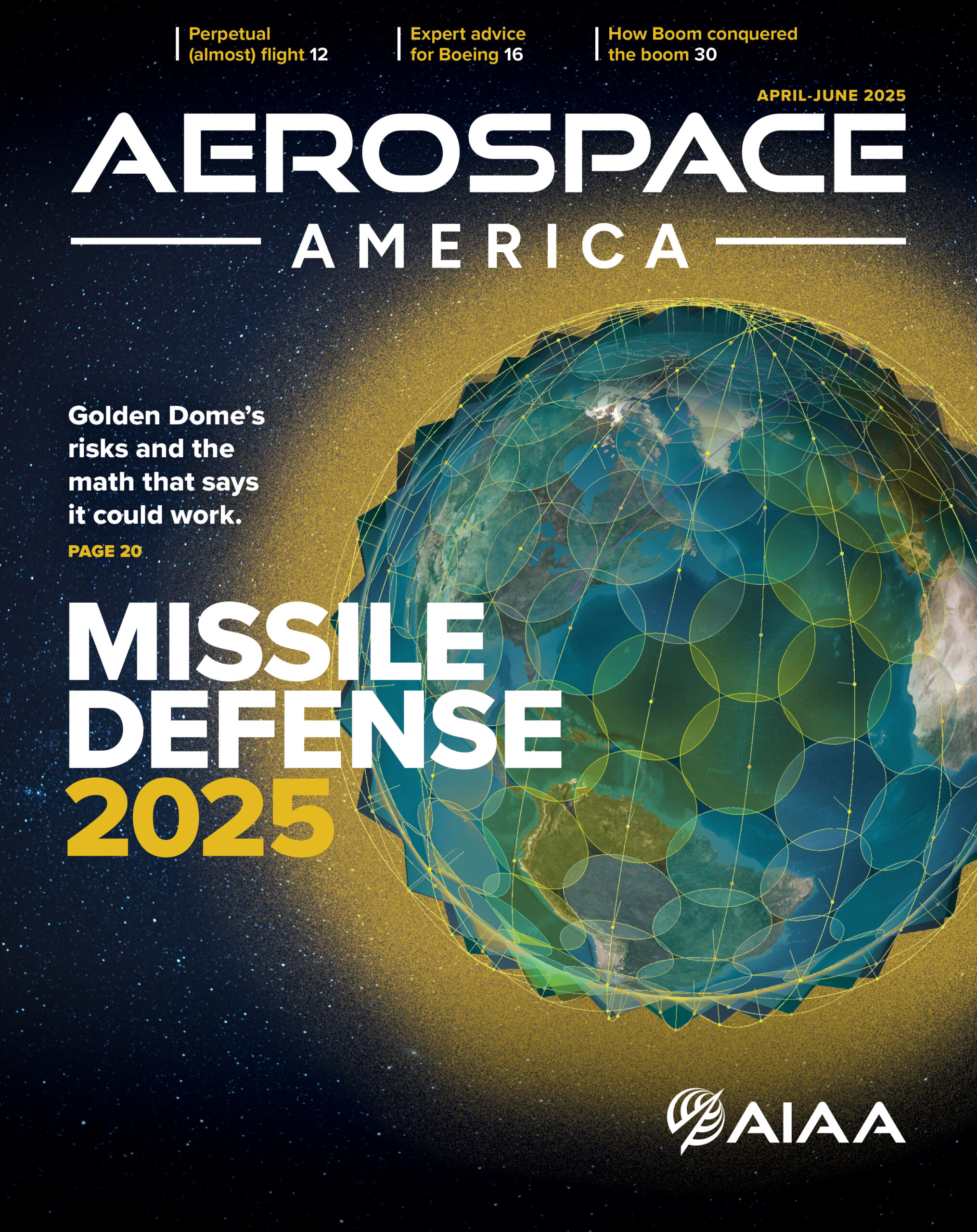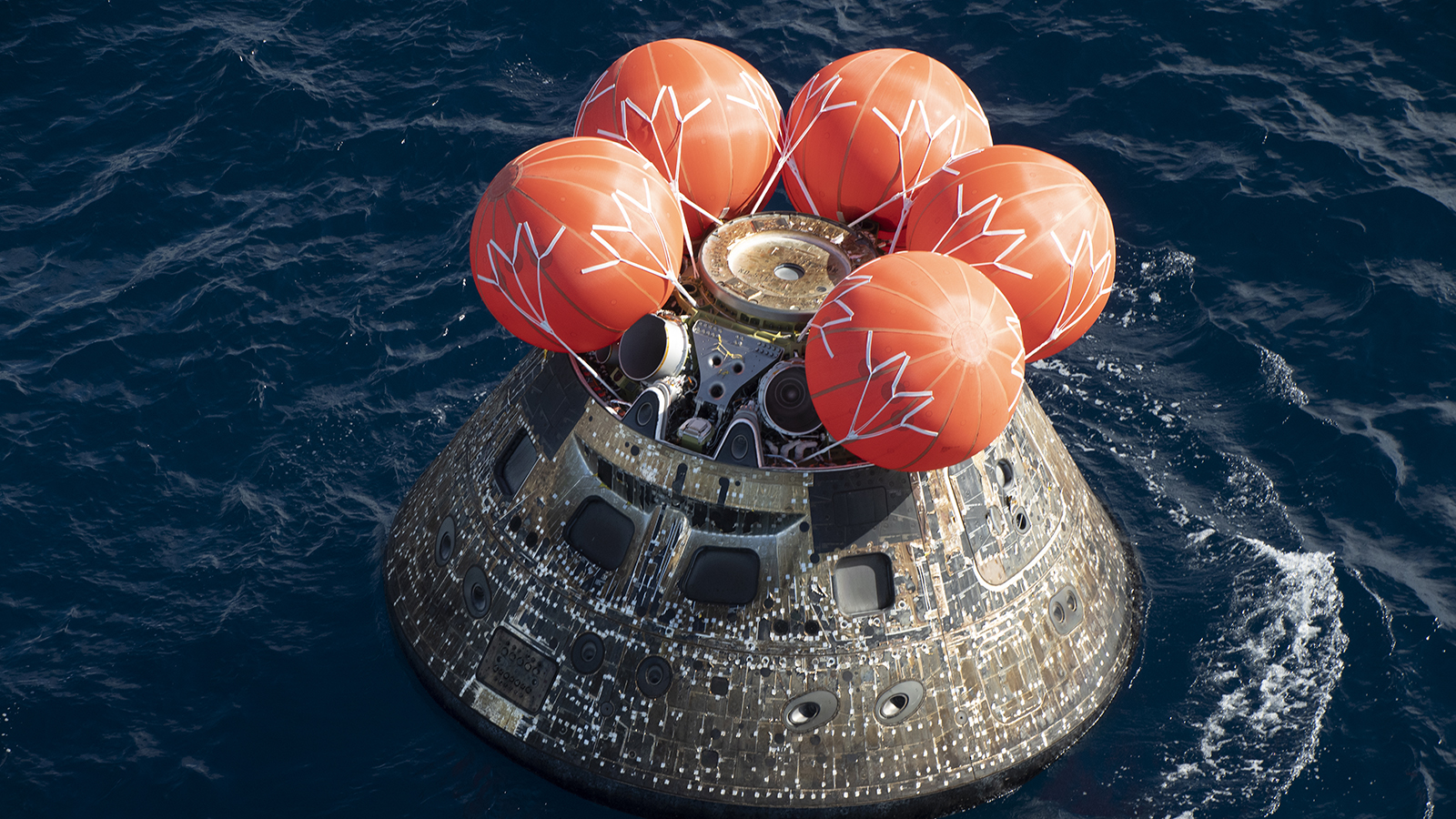Stay Up to Date
Submit your email address to receive the latest industry and Aerospace America news.
The Orion capsule after its 2022 Artemis I flight test. Credit: NASA/Dames M. Blair
AIAA ASCEND, Las Vegas — You might not have to be an Artemis astronaut to fly in an Orion capsule someday. Manufacturer Lockheed Martin is exploring how it might sell flights as “fixed-price commercial services,” an executive told attendees here.
“There’s certainly other nations that are interested in flying people out to deep space,” said Kirk Shireman, Lockheed Martin’s vice president for human space exploration and the company’s head of the Orion program. He shared the stage with Howard Hu, the NASA Orion program manager, for a session titled “Orion: Our Ride to Deep Space.”
He pointed to Axiom Space’s latest private flight to the International Space Station, whose crew members were professional astronauts from Hungary, India and Poland.
“I think the model going forward” will include “industry having arrangements with foreign space agencies,” Shireman said.
Making that transition will require Lockheed Martin to boost Orion production while continuing to bring down the cost per vehicle, he said, something the company has begun under its current production contract with NASA. That deal covers capsules for the first six lunar landings planned under the Artemis program, with an option for NASA to purchase six more. The capsules for the 2022 uncrewed Artemis I demonstration and next year’s crewed Artemis II test flight were contracted separately.
“I think personally that humans going into deep space and being able to do those things sustainably, long term” is “really, really important for our country,” Shireman said. “To do that, we have to be able to do things more sustainably, more efficiently, at a higher pace than what we’re doing right now.”
Part of that cost-reduction strategy, he said, is aiming for “aggressive reusability,” in which more and more of Orion’s components — and eventually entire capsules — will be refurbished and reflown for multiple missions.
Opinions vary on how many missions Orion should fly. The Trump administration in its fiscal 2026 budget proposed phasing out Orion and NASA’s Space Launch System rockets after the Artemis III landing, scheduled for mid-2027, and transitioning to what it described as “more cost effective commercial systems that would support more ambitious subsequent lunar missions.” However, the reconciliation billed passed by Congress earlier this month included $20 billion for an Orion “for use with the Space Launch System on the Artemis IV Mission and reuse in subsequent Artemis Missions.”
In the near term, Hu said that NASA continues to work toward an April launch for Artemis II, which will send three NASA astronauts and one from the Canadian Space Agency around the moon. Next Thursday, he said NASA plans to conduct a “crew suited test” in which the astronauts will don their spacesuits and step inside their Orion for the first time.
“This will really give them an opportunity to check out all the subsystems that are required to breathe and eject CO2 and also keep them cool in their spacesuits,” Hu said.
About cat hofacker
Cat helps guide our coverage and keeps production of the print magazine on schedule. She became associate editor in 2021 after two years as our staff reporter. Cat joined us in 2019 after covering the 2018 congressional midterm elections as an intern for USA Today.
Related Posts
Stay Up to Date
Submit your email address to receive the latest industry and Aerospace America news.




